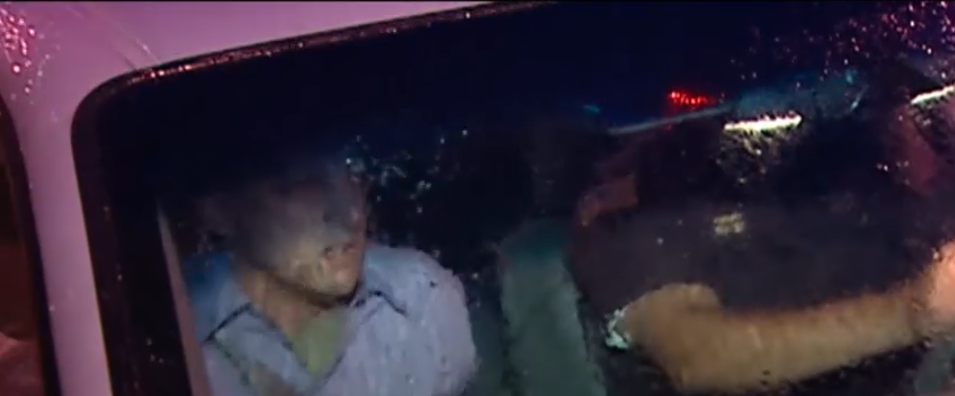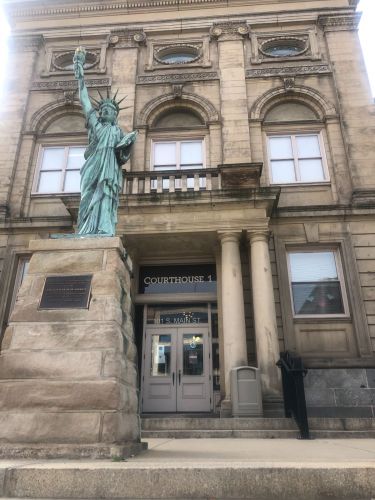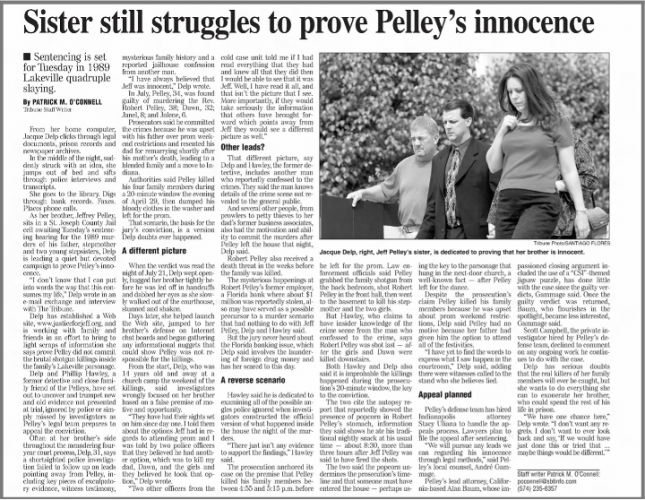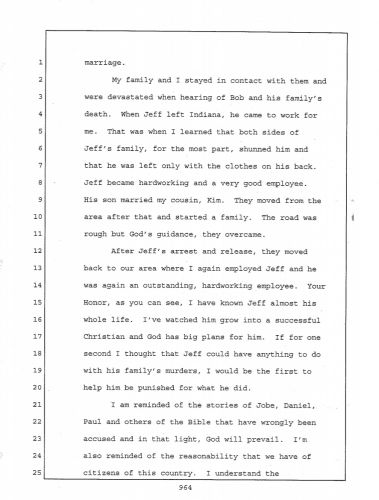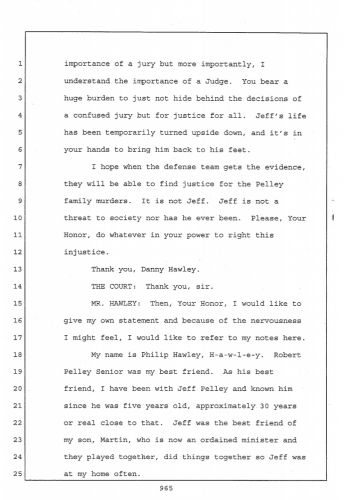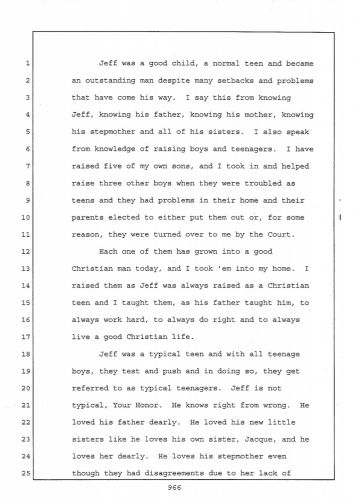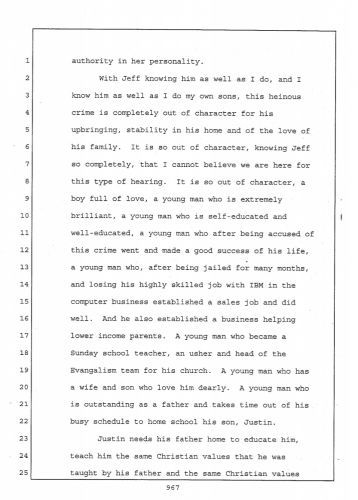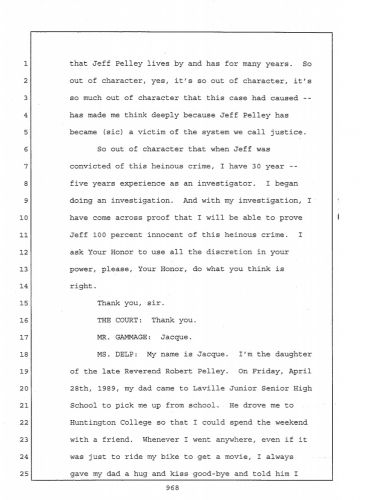Alan Baum admits his failures as Jeff’s defense attorney but insists the physical evidence in the case suggests more than one shooter was involved. The final verdict is sure and swift but new characters in the Pelley’s life speak publicly raising even more questions in the case.
Episode Photos
Court Transcript
Transcripts from the Saint Joseph County 2006 court record of Phil Hawley reading a letter from himself and his son, Danny Hawley, during Jeff Pelley’s sentencing.
Episode Source Material
- “Sister Struggles to Prove Pelley’s Innocence” by Patrick O’Connell for the South Bend Tribune October 15, 2006 via Newspapers.com


